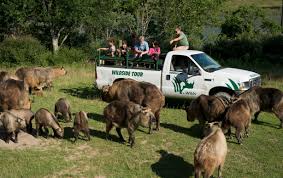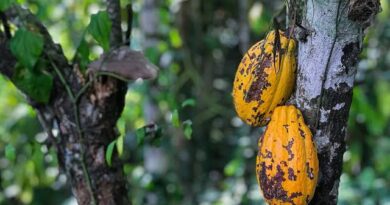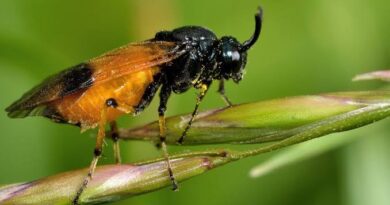All to Know About the Wild Columbus Zoo
The Columbus Zoo and Aquarium is a popular zoological park located in Powell, Ohio, USA. It was founded in 1927 and is home to over 10,000 animals from over 600 different species. The zoo covers an area of over 580 acres and attracts over 2.3 million visitors each year, making it one of the most popular attractions in Ohio.
The Columbus Zoo is well-known for its conservation efforts and has a number of programs and initiatives in place to protect endangered species and their habitats.
The zoo also offers a wide range of educational programs and events for visitors of all ages, including summer camps, overnight programs, and animal encounters. In addition to its animal exhibits, the Columbus Zoo also has several amusement park rides and attractions, including a water park and a roller coaster.
There are also several dining and shopping options available at the park. The Columbus Zoo has been recognized as one of the top zoos in the United States and has received numerous awards for its animal care, conservation efforts, and visitor experience.
It is a must-visit destination for anyone interested in wildlife, conservation, and family-friendly entertainment.
Read Also: A Step by Step Guide on How to Grow Strawberries
The Development of the Wild Columbus Zoo

The Columbus Zoo and Aquarium has undergone significant development over the years, expanding both its animal collection and its facilities.
Here are some notable developments in the history of the Columbus Zoo:
In the 1970s, the zoo underwent a major renovation and expansion, which included the creation of new animal habitats and the addition of new species to the collection.
In the 1980s and 1990s, the zoo continued to grow, with the addition of new exhibits and attractions, such as the Heart of Africa and the Polar Frontier.
In 1993, Jack Hanna became the director of the Columbus Zoo and helped to transform it into one of the leading zoos in the country. Under his leadership, the zoo added new exhibits and attractions, such as the Asia Quest and the Discovery Reef.
In 2008, the zoo underwent another major renovation and expansion, which included the addition of a new entrance plaza, a new animal hospital, and the construction of the Zoombezi Bay water park.
In 2014, the zoo opened the Heart of Africa exhibit, which features a variety of African animals, including giraffes, zebras, and cheetahs. The exhibit includes a safari-like experience that allows visitors to get up close to the animals.
In 2020, the zoo opened the new Adventure Cove area, which includes a variety of rides and attractions, as well as a new sea lion exhibit. Throughout its history, the Columbus Zoo has focused on animal conservation and education, and has worked to provide a top-notch visitor experience. The zoo’s ongoing development and expansion have helped to cement its status as one of the premier zoos in the country.
Read Also: 6 Mistakes to Avoid when using Tarpaulin Fish Ponds for Profitable Fish Farming
The Objectives of the Wild Columbus Zoo

The Columbus Zoo and Aquarium has a number of objectives that guide its operations and programs.
Here are some of the main objectives of the zoo:
Animal Conservation: The Columbus Zoo is dedicated to conserving wildlife and their habitats. It is involved in numerous conservation efforts, including breeding programs for endangered species, habitat restoration, and scientific research.
Animal Care: The zoo is committed to providing the highest level of care for its animals. It employs a team of expert veterinarians, animal care specialists, and nutritionists who work to ensure the health and well-being of every animal in its collection.
Education: The Columbus Zoo is dedicated to educating visitors about the importance of conservation and wildlife. It offers a variety of educational programs, including animal encounters, school programs, and summer camps.
Visitor Experience: The zoo strives to provide an exceptional visitor experience. It offers a range of amenities, including dining, shopping, and entertainment options, as well as interactive exhibits and animal encounters.
Research: The Columbus Zoo is involved in scientific research to better understand the biology and behavior of its animals. This research helps to improve animal care and inform conservation efforts.
Community Involvement: The zoo is committed to engaging with the local community and promoting conservation efforts beyond its walls. It partners with local organizations to support environmental and wildlife conservation initiatives.
Overall, the Columbus Zoo and Aquarium is dedicated to providing a world-class zoological experience that is educational, engaging, and conservation-focused.
Its objectives are designed to promote animal welfare, conservation, education, and community involvement, and the zoo continues to work towards these goals with each passing year.
Economic Impact of the Wild Columbus Zoo

The Wild Columbus Zoo has a significant economic impact on the region.
Here are some of the ways in which the zoo contributes to the local economy:
Job Creation: The Columbus Zoo is a major employer in the region, providing jobs for hundreds of people. These jobs include positions in animal care, administration, retail, and food service.
Tourism: The zoo is a popular tourist destination, attracting millions of visitors each year from both within Ohio and from out of state. These visitors spend money on admission fees, food and beverages, souvenirs, and other local amenities, which generates revenue for the local economy.
Spin-off Businesses: The zoo’s popularity also generates business for other local enterprises, such as hotels, restaurants, and retail stores. The zoo’s presence in the region helps to support these businesses and creates additional employment opportunities.
Tax Revenue: The zoo generates significant tax revenue for the local and state governments. This revenue can be used to fund public services and infrastructure projects, such as schools, parks, and roads.
Philanthropic Donations: The Columbus Zoo has a strong history of philanthropic support, with donations from individuals and corporations supporting the zoo’s various conservation and educational programs. This funding helps to further the zoo’s mission and can also support other community initiatives.
Additionally, the Wild Columbus Zoo is an important contributor to the local economy, creating jobs, generating tourism, and supporting other local businesses. Its economic impact is significant and helps to support the broader goals of community development and prosperity.
Read Also: 10 fun and educational games to play with toddlers









